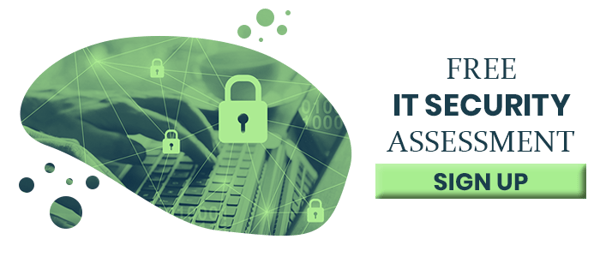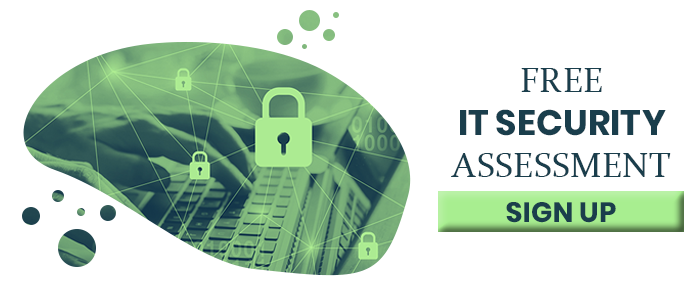Consider this scenario at your business:
When everyone left work the day before, things were fine.
However, when everyone showed up the next day and tried to log on to the computers, that wasn’t possible. Instead of seeing the normal login portal, they were greeted by a message indicating your company’s network and computers – containing the files and data needed for daily business – are inaccessible. The only way out is by paying a ransom.
For any organization, this scenario is as frustrating and scary as it is debilitating – there’s no way to work if your computers and network are taken hostage.
But how did your company get here to begin with?
The answer’s simple: ransomware. Somehow the malicious software made it onto your network and was able to spread and lock things down.
How does ransomware spread? This post will go into the details of these attacks and what measures can be taken to prevent them.
What is Ransomware?
Ransomware is a malicious program that encrypts every file in your system. In order to reverse the encryption and gain access to your files, the victim is required to pay a sum to the attacker, hence the term ‘ransom’.
Ransomware attacks are one of the biggest threats to business, and hackers don’t discriminate against an organization’s size. In other words, anyone is eligible to be a cybercriminal’s next victim via ransomware.
Consider these statistics:
The Top 8 Ways Ransomware Spreads
In our experience, the most common way ransomware gets into the system includes:
- Email phishing
- Remote access
- Lack of employee training
- Smishing
- Weak defenses
- Unsecured wifi
- Zero-day vulnerabilities
- Partners
1. Email Phishing
"Phishing” is the most common ransomware method of infection, where the victim is tricked into clicking a link or opening a file that contains a harmful program. Hackers will pose as your bank, a vendor, a partner, the government, or even a family member and request sensitive information. In the case of ransomware, they may entice you to click a malicious link to a special offer or open a “time-sensitive document” you must fill out. Once you click, the ransomware program begins its attack.
2. Remote Desktop
Remote desktop is a type of application that allows you to use your PC from anywhere just as if you were sitting at your desk. While this sounds like a luxury, it could be a liability if you don’t have the proper security in place. If your defenses are lacking, a hacker can exploit your remote desktop connection and download their ransomware program onto your system.
3. Lack of Employee Training
Human error is often overlooked as one of the biggest threats we face. However, 85% of data breaches were due to the “human element.” Training for employees can be anything from:
- Spam email campaigns
- Newsletters from reputable cybersecurity companies
- Lunch & learns
- Webinars

4. Smishing
Cybercriminals are always developing new methods to exploit user data. In recent months, a new wave of cyberattack via social engineering has become increasingly popular. Like a phishing email, attackers are now sending phishing text messages, AKA “smishing.” These text messages look like they’re coming from a reputable company, and will ask for your login information as a form of “authentication.” However, you’re actually just sending them your login information so they can gain access to your account.
5. Unsecured Wifi
Being able to connect to a “free wifi” in public may feel like an almost standard convenience, especially when cellular signals aren’t cutting it. However, when a network is open to the public, there is no way to monitor the users that are connected to it. Once connected to the same network as a cybercriminal, your devices are susceptible to getting hacked.
6. Zero-Day Vulnerabilities
A zero-day vulnerability is an unknown security flaw to the personnel responsible for maintaining cyber defenses. Once there is a vulnerability known, cybercriminals try to exploit these loopholes and use them as a way into your device. The best defense against a zero-day vulnerability is by registering for newsletters and alerts from any reputable cybersecurity company. Once a vulnerability is found, newsletters and alerts are sent to users to keep them informed followed by a best practice to stay safe.
7. Partner/Vendor Risk
Unfortunately, you can’t entirely control your vendor’s IT. Sometimes that can mean their weaknesses become yours, especially when they have access to your computers and network. With vendor risk management protocols, you can take some additional steps to stay as safe as possible:
- Having an in-depth vendor selection process
- Ongoing monitoring of vendor records
- Creating internal vendor risk management audits
8. Weak Defenses
Having a weak defense against ransomware is a recipe for disaster.
Without proper business-grade monitoring software, your computers and networks are left wide open to incursions, such as:
- Malvertising
- Fileless attacks
- Drive-by downloads
- Phishing
By having a proper defense, if a computer becomes infected, your monitoring software will detect it, segregate it from the rest of the network to keep the other devices safe, and remove the threat before it becomes active.
[How to] The #1 Way Prevent Ransomware Attacks + a Few Others
Like in sports, the best offense is a good defense.
How can companies prevent ransomware attacks?
Though the attacks are sporadic and constantly evolving, the best thing a company of any size can do to protect itself is to partner with a cybersecurity provider.
An investment in peace of mind, managed cybersecurity services give your company a more competitive edge against cyber criminals. With a cybersecurity partner, your business will have access to an array of different opportunities, including:
- Hardware
- Software
- Training
- Beta testing
- 24/7 threat detection
Further Reading: 6 Reasons You Need Remote IT Support Services
In addition to extra resources, being a partner can provide you with priority support service making your response and recovery times faster in the event of an attack.
There are also several more simple steps to take to protect yourself from ransomware:
- Use an all-encompassing antivirus program
- Employ strict network security policies
- Provide consistent training on cybersecurity best practices to staff
- Send frequent reminder memos about phishing & smishing
- Consider restricting network users’ ability to run installers and downloads.
Furthermore, you can restrict users’ permissions based on their department. This way, if someone in HR is attacked with ransomware, the files in sales are not affected.
Ransomware Spread Prevention: An Endless War
As cybercriminals have made ransomware attacks a well-paying industry of sorts, this method of cyberattacks will always remain a present danger to businesses of all sizes. There’s nothing more appetizing to a cybercriminal than an unsecured network that could lead to a big pay day.
With proper protections and a responsive cybersecurity partner, these extra layers of defense can mean the difference from your organization being ruined by ransomware.
Are You Prepared for Post-Ransomware Attack Recovery?
Speak with our team about your cyber defenses and recovery protocols:

(Editor's note: This article was originally published in 2020 and was recently updated.)